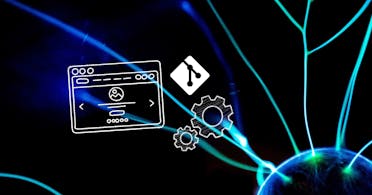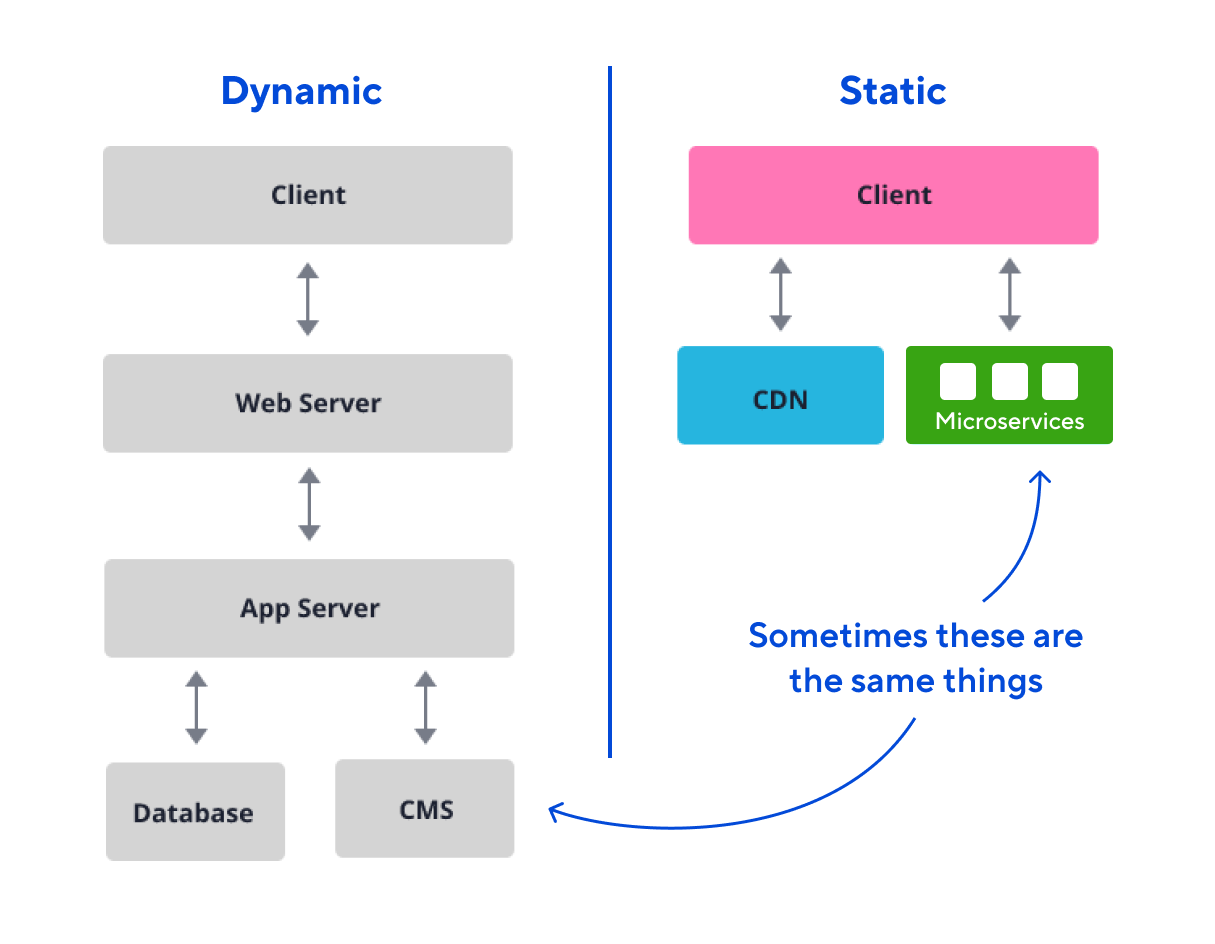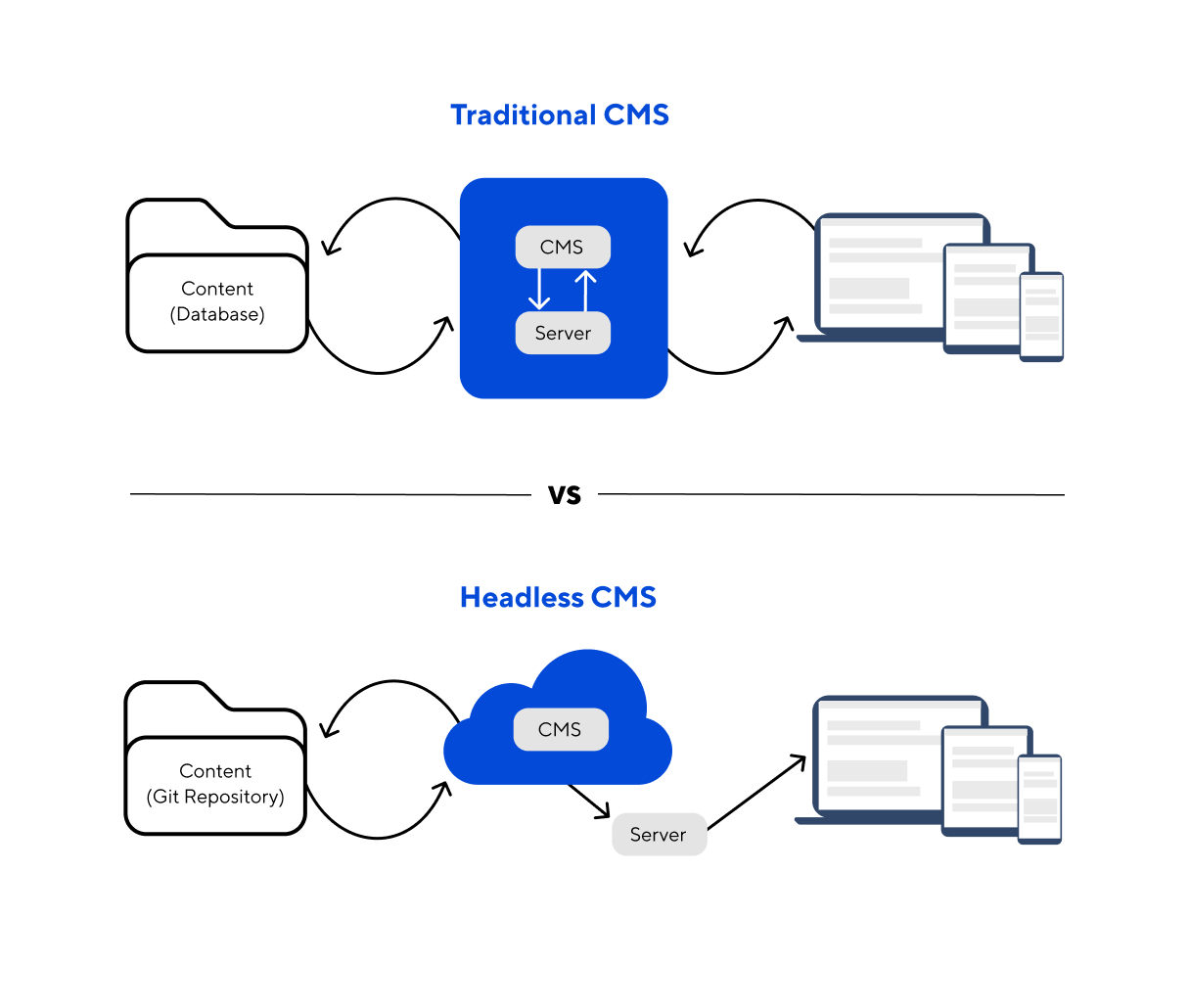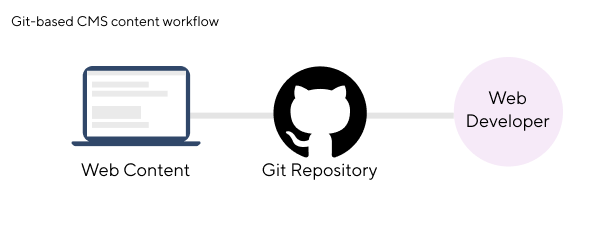What is a Git-based CMS and why you should use one

Your content management system (CMS) is arguably the most powerful publishing tool in your workflow. Content management systems make it possible for non-technical editors to create, maintain, and edit content on their websites. The right CMS should offer a fantastic developer experience while empowering marketers and content editors to do their jobs more independently and efficiently. Yet many traditional CMS platforms leave marketing teams and content teams feeling frustrated and dependent on developers to make simple changes. Luckily, modern content management systems like the Git-based CMS provide editors’ with greater autonomy and confidence.
A Git-based CMS is a headless CMS Direct link to this section
A headless CMS decouples your website’s content — the body of your site — from how your content is delivered and displayed on your website. Your site delivery, or the head of your website, is controlled by your static site generator (SSG) of choice — tools like Astro, Eleventy (11ty), and Hugo. This is the preferred method for building static websites. Static sites have superior web performance compared to dynamic websites, while still providing the option to embed dynamic components within your static site. You can learn more about why you should choose to build static sites here.

Separating your site’s content from its delivery system offers many benefits. It gives developers more flexibility to use and swap out their favorite technologies to build your site more efficiently, without having to change your CMS. Going headless also improves your website’s performance and security compared to traditional CMS platforms like Wordpress. This will reduce the development time and costs needed to keep your site secure. It will also increase your site’s speed, which will improve search engine optimization (SEO).
 Direct link to this section
Direct link to this section
Direct link to this section
A Git-based CMS improves your content workflow Direct link to this section
The benefits of a Git-based CMS boil down to your content publishing workflow. A Git-based CMS leverages the power of Git, a popular open source software built to help developers collaborate remotely with ease. You can think of the Git-based CMS as a layer on top of Git that allows non-technical editors to create and edit content on their website using an intuitive interface that eliminates the need to understand Git. So both developers and editors get to benefit from Git workflows — but what’s so great about Git workflows, anyway?
 Direct link to this section
Direct link to this section
Direct link to this section
Full version control & simplified collaboration Direct link to this section
When using a Git-based CMS, all your content is stored in a Git repository as text-based files. You can manage these files through your intuitive CMS interface to take advantage of Git’s advanced version control system. With a Git-based CMS, non-technical editors are able to easily roll back changes with full version control. This means that you never have to worry about losing your content.
While other headless CMSs, like an API-driven CMS, often focus on versioning entire pages, Git-based CMSs enable more granular version control at the object level. This means that you can track changes to individual elements on your page, such as paragraphs, images, components, or widgets. This reduces the risk of content conflicts, making it easier for your team to collaborate without stepping on each others toes.
What’s more, with a Git-based CMS you will be able to maintain multiple versions of the same content, thanks to Git’s multi-object versioning capabilities. This means that content teams can set up multiple versions of the same content in your Git-based CMS, whether to experiment with different content variations, preview changes in staging environments, or seamlessly roll back to previous versions if necessary.
CloudCannon's own content team frequently takes advantage of multi-object versioning in CloudCannon’s Git-based CMS by setting up test sites called ‘branches’. These 'branch' versions allow time-consuming changes to be made without blocking the main website’s staging environment from publishing small changes. When ready, the branch’s content is simply sent, in a process known as a 'merge', to the main website with the click of a button — see it in action below! You can find out more about our marketing team’s publishing workflow here.
Own your content with a Git-based CMS Direct link to this section
Since your content files are stored in a Git repository when you use a Git-based CMS, you are the ultimate owner of your creations. This eliminates vendor lock-in, meaning you're always able to switch your host, or even your CMS provider, with ease. All of your website’s content is immediately available in the Git repository, ready to transfer to another platform if needed.
This is where Git-based CMSs really shine above API-driven CMSs: if your Git-based CMS provider goes offline, you retain full access to your code base and content stored in remote repositories. Any changes you need to make can be pulled and merged directly in Git, giving you a backup method to manage your website outside of the CMS, should the need arise.
Choose a Git-based CMS to revolutionize content management Direct link to this section
As content teams strive for greater efficiency and collaboration, Git-based CMSs prove to be game-changers. A Git-based CMS empowers your team to revolutionize your content management processes with full version control, and improved collaboration capabilities. With the power of Git, your team can work offline and merge changes effortlessly, ensuring streamlined workflows and reducing conflicts, while maintaining full ownership of your static sites.
Edit content visually with CloudCannon Direct link to this section
CloudCannon is a Git-based CMS perfect for editing content-rich static sites. Beyond the benefits of Git-based CMSs mentioned above, CloudCannon’s CMS also offers the ability to edit your content visually with our intuitive Visual Editor. This means no more editing in the dark: changes are shown live on the page to further improve content workflows. What’s more, with the CloudCannon Visual Editor you can also build site pages visually using a custom component library. Choose CloudCannon as your Git-based CMS to empower marketing and content teams to deliver exceptional digital experiences with ease.
Launch your website today
Give your content team full autonomy on your developer-approved tech stack with CloudCannon.




